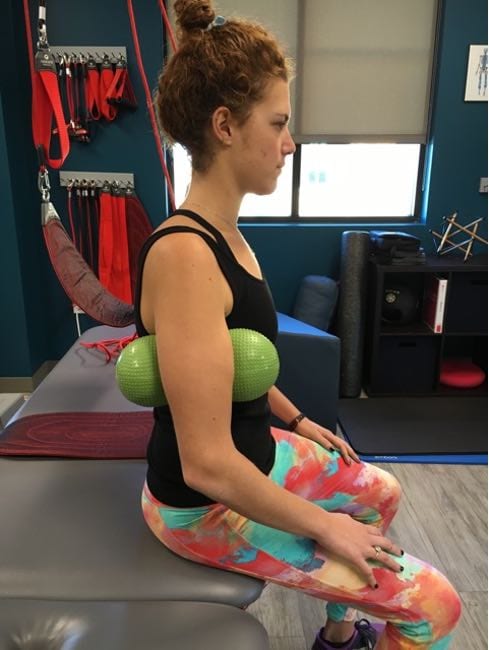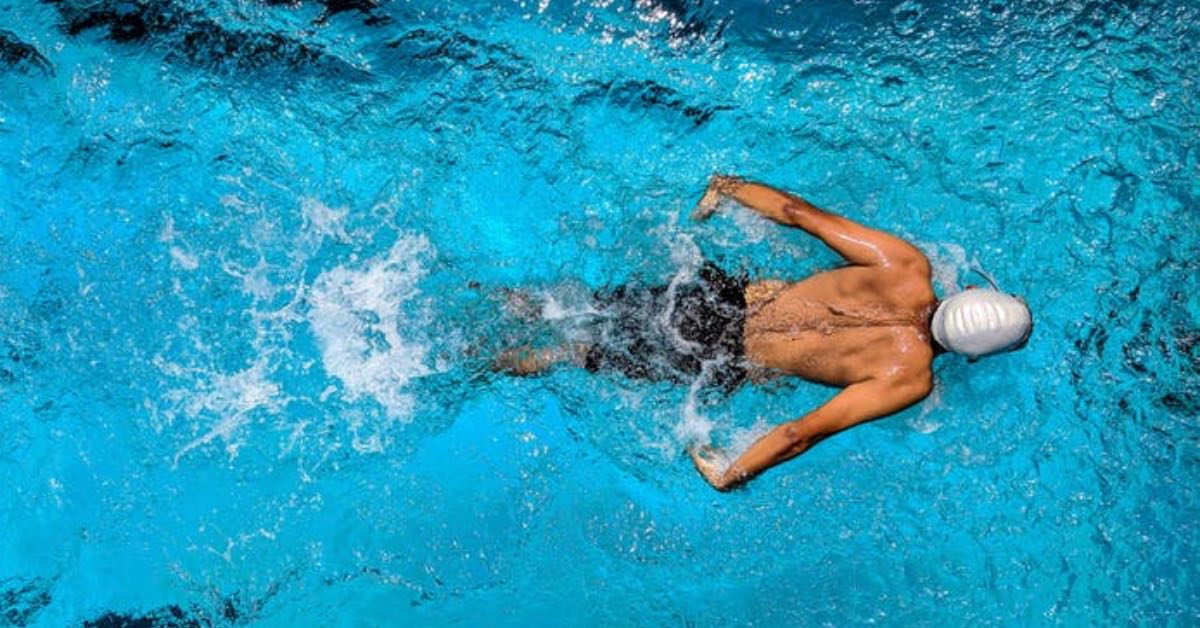What is Swimmers Shoulder?
As a swimmer you rotate the same muscles in your shoulder, day after day, often for hours at a time, and if competitive most every day of the week.
You’re bound to experience a swimmers shoulder injury at some point. Shoulder injuries are the most common injury for swimmers. Between 40-90% of swimmers suffer from shoulder pain known as ‘swimmer’s shoulder.’
Swimmer’s shoulder is a laymen’s description of when the ball at the top of your arm bone (humerus) pinches against the socket (acetabulum) of the shoulder blade. There are sensitive structures including ligaments, tendons, and the joint capsule that can be compressed. The technical term is impingement, but you may experience symptoms varying from aching and loss of mobility to radiating intense and debilitating pain.
Do you love swimming but struggle with constant shoulder soreness? Don’t push through the pain. Read on for a comprehensive guide to swimmer’s shoulder stretching and strengthening.
Causes
If you swim often, you know that the upper body is the driving force of movement. Whether you swim breaststroke or freestyle or fly the repetitive overhead shoulder motion and pull of the arms provide most of the muscle power and propulsion through the water.
Repeated movements with the same set of shoulder muscles put wear and tear on the area and can lead to both joint restriction and muscle imbalance. Over time, constant exertion may lead to swimmer’s shoulder.
Remember that you don’t have to be a swimmer to experience swimmers shoulder or the shoulder impingement commonly referred to as swimmer’s shoulder. Any athlete that uses their shoulder muscles in constant, repetitive overhead motions including baseball pitchers, volleyball, and tennis players can suffer from the motion restriction and muscle imbalance that can lead to the chronic inflammation and pain experienced in swimmers shoulder.
Overuse of the shoulder is the main cause of this type of injury. But, you can develop swimmers shoulder due to other factors as well. Sub-optimal stroke technique, previous shoulder injury, poor posture outside of the pool, and inadequate rest can all lead to or compound an injury.
Symptoms
How do you know if you have swimmers shoulder? Not all shoulder pain means you have a serious injury. Working out the same muscle groups can lead to a normal level of soreness on a daily basis.
If you experience sharp pain in your shoulder muscles that won’t go away after a few days rest, you might have swimmer’s shoulder. Some common symptoms include:
The main difference between the typical muscle aches of normal post-exercise soreness and a shoulder injury is the severity of the pain and the progressive worsening of symptoms over time.
If you’ve taken a few days off from activity to rest the area, but the pain persists, you should look into the swimmer’s shoulder stretching and strengthening tips below.
Stretching
Did you know stretching is one of the best ways to both prevent injury and increase your athletic performance?
Research shows that proper stretching increases flexibility and helps to heal muscle injuries. But what about stretching after a swimmer’s shoulder injury?
Physical therapy and muscle rehabilitation include stretches to decrease restriction and improve muscle balance. This can relieve pressure from the injured area and improve access for proper muscle strengthening. The swimmer’s shoulder stretching in the video below targets three main areas: pectoral muscles, latissimus muscle, and the thoracic spine region.
You certainly do not have to limit yourself to the stretches shown here. These are simply a few categories I have found to be very effective to use every day to treat and prevent swimmer’s shoulder and injuries common to the overhead athlete. At the end of the day, if you remember the importance of releasing the front arm line of the pectoralis and latissimus muscles and mobilizing the thoracic spine, you will set your body up to strengthen in a more neutral position.
Strengthening
Here at the Center for Healing and Regenerative Medicine – CHARM – we have a mantra – Release * Balance * Build. The importance of releasing muscles that are restricted or up-regulated in a shortened position prior to attempting strengthening is simple – a muscle has an optimal resting position from which it most effectively activates and performs.
By first releasing through use of the swimmer’s shoulder stretching techniques previously discussed, the shoulder is set up for strengthening in the most efficient way. There are a lot of muscles of the shoulder and many different exercises to strengthen them.
The few I have chosen here focus on these three groups of muscles that are often found to be weak or inhibited in the presence of impingement and swimmer’s shoulder.
Just remember the mantra – Release the Front and Strengthen the Back!
Are you still experiencing shoulder pain even after a bit of time with these swimmer’s shoulder stretching and strengthening exercises? You might have a more serious muscle imbalance or injury that would benefit from a thorough assessment and intensive rehabilitation program. “A physical therapist with a specialty in neuromuscular re-education” can utilize techniques to help uncover and treat the root cause of your problem.
The Importance of Posture
Haven’t suffered from swimmer’s shoulder before but worry about an injury keeping you away from the water? Suffered in the past and looking for ways to reduce the likelihood of recurrence?
Don’t get sidelined by a preventable injury. Add some postural and positional strategies to the stretching and strengthening tips above and do everything you can to prevent swimmer’s shoulder.
First, pay attention to your posture. Poor posture is a recipe for all sorts of musculoskeletal problems including swimmer’s shoulder. Using the green spacers from “Gaiam” shown in the videos can be an easy way to help maintain an open, released, and neutral posture through the shoulder girdle.

Treatment Using Regenerative Medicine
Don’t ever ignore severe pain. If left untreated, impingement syndrome known as swimmer’s shoulder can bring more serious complications including tendinitis, tendinopathy, and rotator cuff tears. An ultrasound or MRI may be required to diagnose these injuries, but most all can be treated non-surgically with Regenerative Medicine. Check out our regenerative medicine options to repair these injuries common in persistent repetitive impingement and swimmer’s shoulder.
It’s no fun watching your teammates enjoying a swim meet while you sit on the sidelines.
Start incorporating swimmer’s shoulder stretching and strengthening into your routine now to prevent complications from repetitive strain. Take precautions by practicing proper technique and good posture.
If you think you might already have swimmer’s shoulder, get back in the pool and doing what you love with the restorative treatment that is right for you. For diagnosis and pain relief options for your shoulder you can:

Michele Zink Harris
PT, CNP, RASDepartment of Physical Therapy
Center For Healing & Regenerative Medicine




